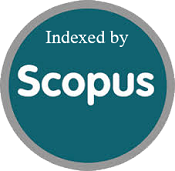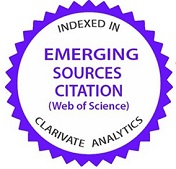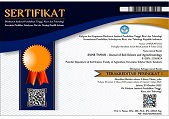To maintain academic integrity and ensure responsible use of technology, SAINS TANAH – Journal of Soil Science and Agroclimatology adopts the following policy regarding the use of Generative Artificial Intelligence (AI) and AI-assisted tools in manuscript preparation, analysis, and review.
1. Transparency and Disclosure
Authors must fully disclose any use of Generative AI or AI-assisted technologies (e.g., ChatGPT, Gemini, Copilot, Claude, Midjourney, DALL·E, Grammarly, etc.) in the preparation of the manuscript.
Disclosure should be included in a dedicated section titled “Declaration of AI Use” at the end of the manuscript, specifying:
-
The tool(s) used
-
The purpose of use (e.g., language editing, figure creation, coding assistance)
-
The scope and extent of assistance
Undisclosed use of AI tools may be considered a breach of publication ethics.
2. AI Cannot Be Listed as an Author
Generative AI tools cannot be credited as authors, co-authors, contributors, or correspondents.
Only humans with verifiable intellectual contributions may be listed as authors.
3. Responsibility and Accountability
Authors bear full responsibility for:
-
The accuracy and validity of all content generated with or assisted by AI
-
Checking for errors, fabricated information, incorrect citations, or biased outputs
-
Ensuring that text, data, figures, or code produced with AI do not infringe copyright or ethical standards
The journal will not accept manuscripts containing unverifiable or fabricated data produced by AI tools.
4. Restrictions on AI-Generated Content
AI tools may be used for:
-
Grammar correction and language refinement
-
Drafting text that is then substantially revised by the author
-
Figure enhancement, image clarity improvement, or aesthetic editing
-
Data analysis assistance (e.g., coding help), where authors retain full control and verify results
AI tools may NOT be used for:
-
Generating research data, experimental results, or statistical outcomes
-
Fabricating citations or literature summaries
-
Producing images or figures that may misrepresent scientific findings
-
Writing substantial sections of the manuscript without human revision
-
Peer review reports or confidential material assessment
5. Data, Images, and Figure Integrity
All data, images, and figures must reflect factual and verifiable results.
If image-editing AI tools are used (e.g., to improve brightness, clarity, or color), authors must ensure that:
-
No scientific information is altered
-
No manipulation misleads interpretation
6. AI Use by Reviewers and Editors
Reviewers and editors must NOT use Generative AI tools to analyze, summarize, or provide feedback on confidential manuscripts.
AI tools may only be used for non-confidential tasks such as grammar checking or non-sensitive text drafting.
7. Ethical Considerations
Misuse of AI tools—such as generating false data, misrepresenting findings, or failing to disclose AI use—may lead to:
-
Manuscript rejection
-
Retraction after publication
-
Reporting to the authors’ institution
-
Future submission restrictions











.png)





